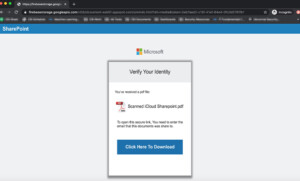Looking for IT Support In Wichita? Call Us Now! (316) 788-1372

We’ve seen a rise in tickets lately caused by a sneaky trick: malicious website notifications disguised as legitimate work alerts. These pop-ups often look like they’re coming from trusted tools (like SharePoint or HR portals), but in reality, they’re phishing scams designed to steal credentials or trick you into clicking dangerous links.

Here’s how a malicious notification can look when disguised as a corporate alert — don’t fall for it, even if it seems work-related.
Once you click Allow, these fake notifications can:
Even if you don’t interact further, the nonstop alerts cause confusion and waste valuable time.
| Red Flag | Why It’s Suspicious |
|---|---|
| Pop-ups that appear during normal tasks | Real HR portals or tools rarely ask for permissions this way. |
| Urgent language (“Click to verify,” “Access blocked”) | Designed to create panic and force quick action. |
| Unfamiliar or mismatched URLs/domains | Notifications should only come from your known company domain. |
| Requests for login info or sensitive data | Legitimate notifications never ask you to enter credentials directly. |
Bottom line: Cybercriminals know that disguising scams as “work-related” makes them harder to spot. But with a little awareness and caution, these tricks are easy to avoid. Remember, when in doubt – verify!